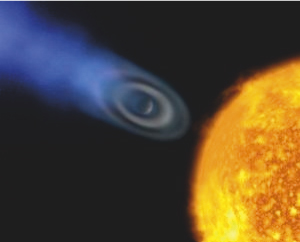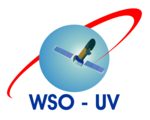Scientific programs with the Spektr-UF / WSO-UV
The project observing time is planned to be distributed as:
- Core Program (CP).
- National Programs (NP).
- Open Time for the International Community (OT).
The Core Program will be designed by a Core Program Team and should be carried out during the first 2 years of the project. The time for Funding Bodies Programs is allocated by a national panel for each of the countries involved in the implementation process of Spektr-UF / WSO-UV. The observing time granted for each country will be proportional to its contribution to the project. There will be a large fraction (up to 40 percent) of Open Time for the International Community. First call for proposals for national and open times will be one year before launch.
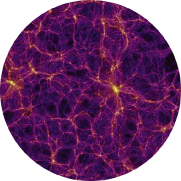
The observatory will provide unique opprotunities for study of the "cosmic web" (as illustrated in the figure), search for dark baryonic matter, study of thermal and chemical evolution of the Universe as well as for study of "standard candles" used in cosmology - type Ia supernovae.
Spektr-UF / WSO-UV is a powerful tool for stellar physics, study of accretion discs and of other manifestations of activity of stars and compact objects.

The overwhelming majority of stars are binaries. Of special interest is the physics of close binaries. At a certain stage of its evolution, one of the components expands and fills its critical volume (the Roche lobe). In this case, mass exchange begins between the components - the matter of the expanded component forms a jet flow and produces an accretion disk surrounding the second component. Complex processes of interaction between the accretion disk and the central star determine the development of powerful stellar flares (explosions) and other energetic processes accompanied by strong UV radiation.
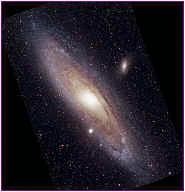

The Spektr-UF / WSO-UV optical and UV imagers will allow unprecedented detailed investigation of resolved stellar populations in the Milky Way, star clusters and nearby galaxies. On the leftt the Andromeda galaxy, as imaged in the optical from the ground, shows the old stellar population, while on the right the UV image of the same galaxy (from the small UV GALEX telescope) shows spiral arms, star forming regions, and exotic hot stellar objects (binaries, LXRS, pulsars). Spektr-UF / WSO-UV diffraction limited images will be used to derive proper motions in crowded environments: Spektr-UF / WSO-UV is complementary to GAIA in this respect.
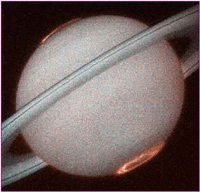
Studies of outer layers of planetary atmospheres are also planned. These observations will contribute to better understanding of terrestrial atmospheric features. This image (from HST archive) demonstrates the auroral activity at Saturn.
Study with Spektr-UF / WSO-UV of extrasolar planet transits will provide important information on the planetary atmospheres and their interaction with the parent star.
The figure below is an artist's impression of atmosphere evaporation in a young planet orbiting very close to its parent star (courtesy Alfred Vidal-Madjar).
